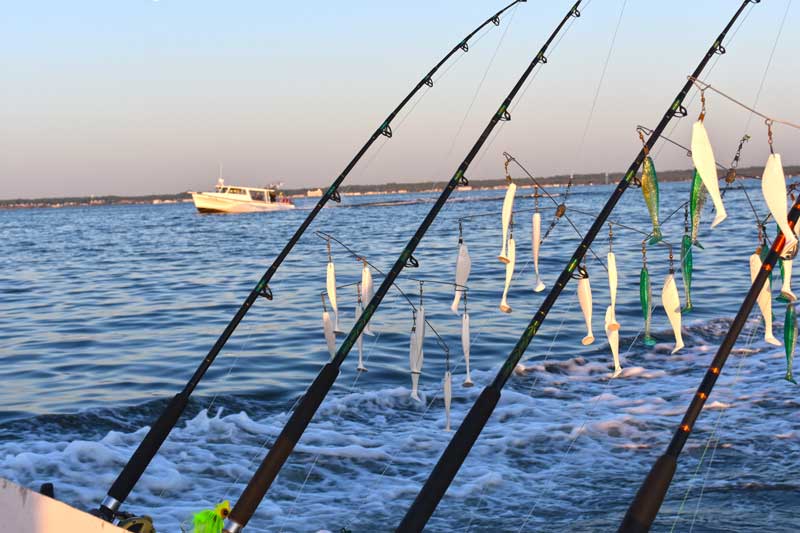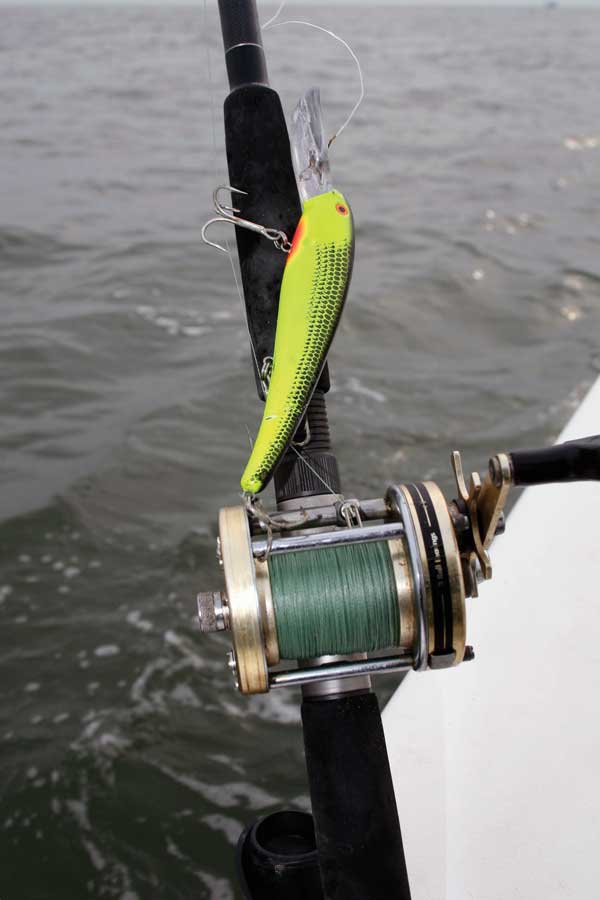Trolling is an excellent technique for catching everything from rockfish to blue marlin, but it is not a one-speed-fits-all situation. Oftentimes rockfish require a slow speed while with wahoo you can troll for them at planing speed. With a range of speeds like that, you will also need quite a variety of lures designed for high and low speed service.

Let’s begin with rockfish, just about everyone’s favorite fish in the Chesapeake Bay. Trolling everything from Mann’s Stretch 25s and 30s to live bunker or eels will at one time or another catch a rockfish. Add in umbrella rigs, Huntington Drone Spoons, parachutes, and MOJOs for just a small list of lures that are used in the Bay and the ocean.
All these lures have one thing in common: they must be trolled at a slow speed. When trying to figure out what speed you are trolling your lures, your GPS is not really handy. The GPS gives the boat’s speed over the bottom. While good for navigating, you need to know the speed of the water going past your lures. For that you need to check the speed on your SONAR machine.
The little propeller on the transducer sends the speed of the water going past the hull and thereby the speed of the water going past your lures.
That speed will vary as you are going with and into the current. While we seldom go across the current, that too will cause the water speed to change. In other words, the captain cannot put on the auto pilot and spend the day just driving the boat. He must keep an eye on the speed of the water going past the lures, the action of the rod tips that will indicate if the lures are working correctly, and where he is going to make sure he doesn’t hit anything and stays in productive water.
It does take a little experience to learn what the rod tip should look like when trolling certain lures. Those Mann’s Stretch plugs have a definite vibration and any change in that frequency indicates a problem. The same is true for spoons and tubes.

Most of the time when a lure changes frequency, it is due to fouling up with seaweed or some sort of trash. Trolling too fast will also cause problems, and the Mann’s plugs will actually start going in a circle and jumping out of the water.
Trolling live bait is really tricky. Bunker is a favorite for both rockfish and king mackerel. It is also used, with some success, on cobia.
You want the bunker to swim as naturally as possible, just under the surface, so here too the trolling speed is very slow. Rigs for king mackerel use a fine wire with two or three small treble hooks that snag the fish as it strikes like lightning at the bait. Bunker rigged for rockfish normally have a circle hook on a mono leader. The same is true for eels rigged for rockfish. It is not unusual for captains to troll for a short distance, take the boat out of gear, drift for a short distance, and then engage the motor and troll for a short distance again, when trolling live bait for rockfish.
Trolling on the offshore grounds is a whole other story. Out here you seldom troll below five knots. Tuna and white marlin respond to dead bait trolled between five and seven knots. Those who use only lures will kick their speed up to seven to 10 knots, depending on the lures they choose to employ.
There was a time back in the early 1970s when I would only fish with dead bait. Mullet, ballyhoo, and squid were my standby baits, and the only lures I put in the water were cedar plugs. The more time I spent in the deep the more I learned about the actions of marlin and tuna and the more I began to use lures. Lures create a reaction strike and by the time the fish realizes he made a mistake, it should be hooked.
By Eric Burnley